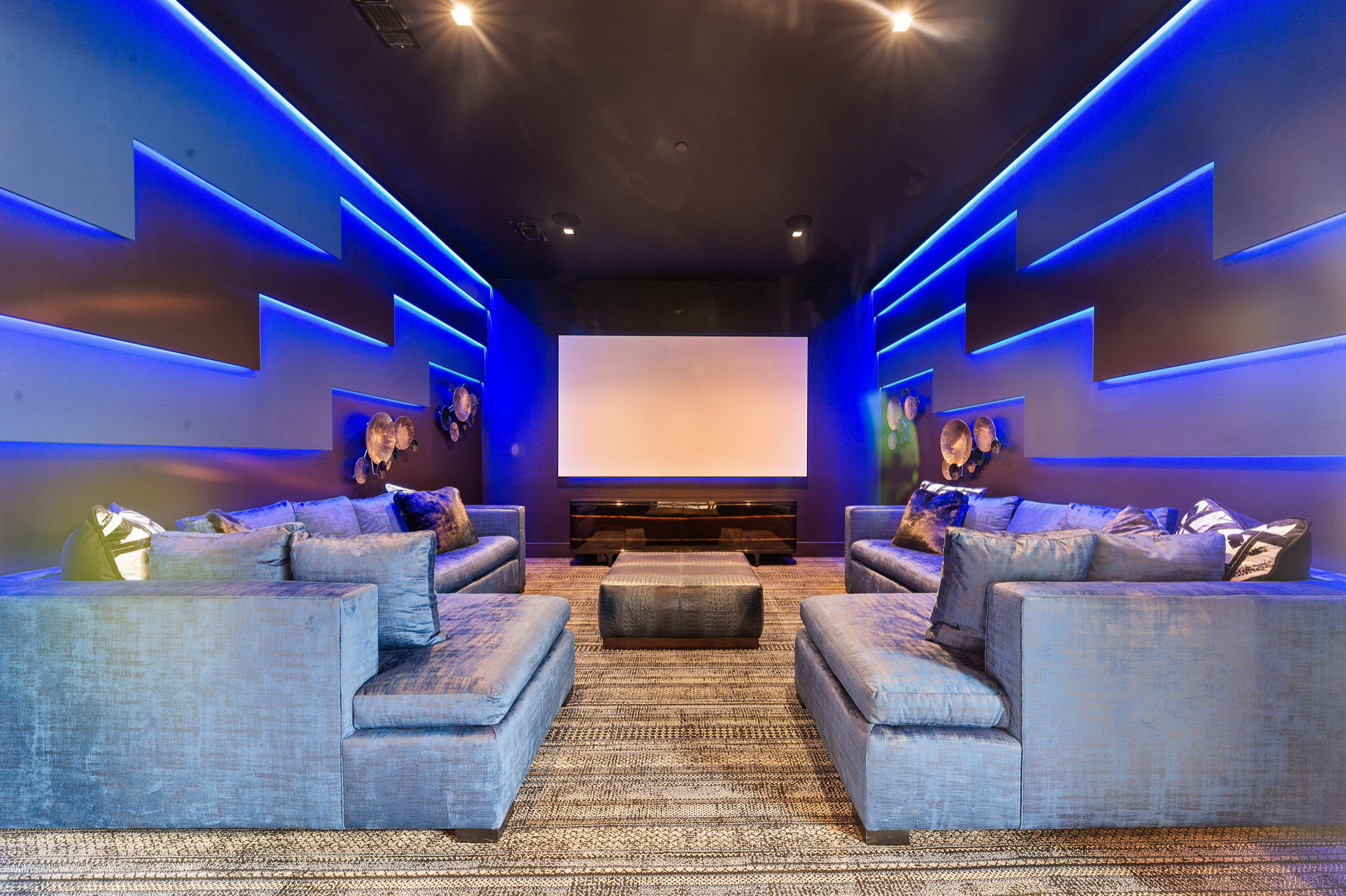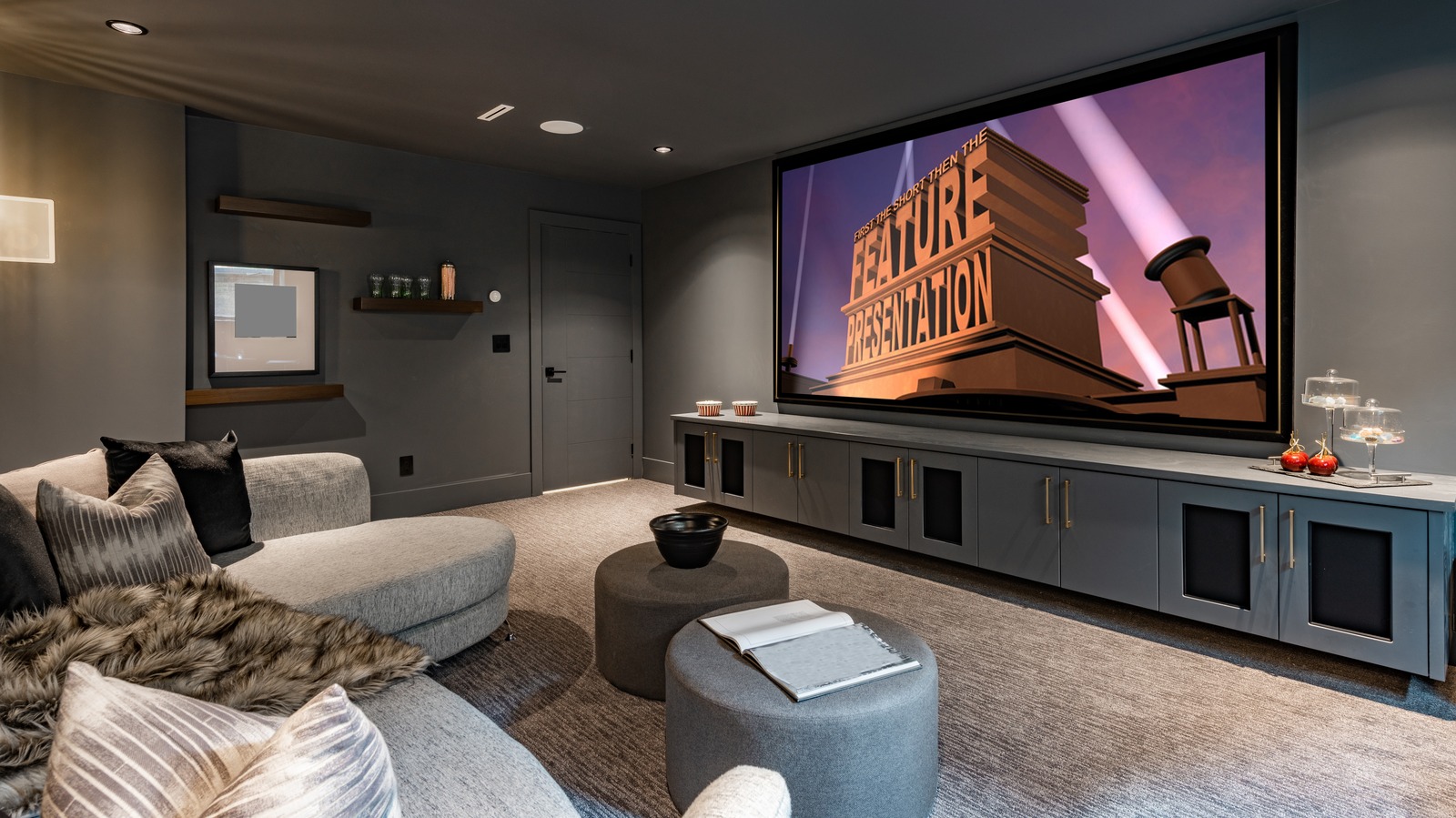The Comprehensive Guide to Home Theater Installation Tampa Homeowners Rely On
The Comprehensive Guide to Home Theater Installation Tampa Homeowners Rely On
Blog Article
Home Theater 101: Everything You Need to Know for a Cinematic Experience in your home
Creating a home cinema that matches the motion picture experience of a business theatre entails cautious consideration of several components, consisting of display choice, stereo, and space layout. Each aspect plays a pivotal role in accomplishing the wanted setting and functionality. Whether you are pondering the suitable screen dimension or the intricacies of border audio, comprehending these principles is crucial. As we discover these critical components, it becomes apparent that the options made can substantially affect your general viewing experience, leaving one to ponder exactly how these decisions will certainly shape your personal movie theater.
Selecting the Right Screen
When establishing a home theater, selecting the ideal screen can make or damage the viewing experience - home theater installation tampa. The display works as the centerpiece of your setup, influencing photo quality, seeing angles, and general visual. Key variables to take into consideration consist of screen size, resolution, and type
First, determine the suitable screen dimension based on your space measurements and seating distance. Next, pick in between different screen types, such as fixed-frame, mechanized, or retractable screens, each offering distinct benefits.
Resolution is another critical element. For a really immersive experience, take into consideration a screen designed for 4K and even 8K web content, guaranteeing intensity and clarity. Additionally, think about the screen's gain, which impacts brightness and comparison; a greater gain can boost brightness in well-lit areas, while a reduced gain may be better for darker atmospheres.
Selecting Audio Equipment
Audio equipment is a vital part of any home theater system, dramatically enhancing the total viewing experience. The option of audio gear can determine the depth, clearness, and immersion of audio, crucial for developing a cinematic environment.
When choosing audio equipment, consider a surround sound system, which normally consists of a receiver, multiple speakers, and a speaker. A 5.1 or 7.1 network system is recommended, where the very first number stands for the audio speakers and the second the subwoofer, providing an immersive soundscape. The receiver is the heart of the system, handling sound and video clip signals, and need to support modern-day styles like Dolby Atmos for an improved spatial experience.
Quality speakers are crucial; appearance for versions that supply a balanced sound account with good bass reaction. Floor-standing audio speakers can create richer audio, while bookshelf alternatives conserve space. In addition, take into consideration cordless options for simplicity of installation, although wired systems often supply premium performance.

Optimum Seating Arrangements
Creating a perfect home movie theater experience hinges substantially on optimal seating plans. The plan of seats plays a crucial role in both comfort and watching quality, directly impacting the total motion picture experience.
First, consider the display size and watching range. A typical standard is to place seats at a distance around 1.5 to 2.5 times the diagonal size of the screen. This ensures an immersive experience without stressing the eyes.
Following, altitude is vital. If your seats is in a tiered format, the back rows need to be more than the front to stay clear of obstructions. For flat seats, guarantee that the front row is not also near to the display, which everyone has a clear line of view.
In addition, think about the setup in regards to social characteristics. Group seats can improve the communal experience, while private seats may be liked for personal watching.

Finally, prioritize comfort with ergonomic seats that sustains extended viewing durations. Incorporating recliner chairs or supported seats can substantially enhance the experience, making the home movie theater a recommended location click over here for both enjoyment and leisure.
Lighting and Ambiance
Efficient lighting and setting are vital components of a well-designed home theater, as they substantially affect the viewing experience. The ideal lights can enhance the cinematic feel, while bad selections can diminish it. For optimal results, think about a layered lights approach that includes ambient, task, and accent lighting.
Ambient lighting offers general illumination, making certain that the room is not entirely dark, which can stress the eyes. Dimmer buttons are highly recommended, enabling adjustments based on the content being seen. Task lighting, such as wall sconces or floor lights, offers functional lighting for tasks like analysis or browsing the area without interrupting the general environment.
Accent lighting can be used to highlight building functions or create focal points, adding depth and passion to the space. LED strip lights behind screens or along racks can supply a subtle radiance that boosts the visual experience have a peek here without overwhelming the visitor.

Wiring and Installation Tips
A well-planned circuitry arrangement is crucial for attaining optimum performance in your home theater system. Correct circuitry not just guarantees premium audio and video clip signals yet likewise enhances the general aesthetic of your space. Begin by drawing up your design, determining where each component will certainly be put, including your screen, audio speakers, and receiver.
When choosing cables, focus on premium, appropriately gauged circuitry to decrease signal loss. HDMI cables must be used for video clip connections, while audio speaker cable need to match the specs of your speakers and amplifier. Go with in-wall rated wires to adhere to safety and security requirements and maintain a clean appearance.

Final Thought
In summary, producing an extraordinary home cinema experience needs mindful consideration of numerous elements, consisting of screen choice, audio tools, seating arrangements, illumination, and wiring. Each component plays a critical function in attaining optimal performance and setting, ultimately improving the satisfaction of home entertainment. By prioritizing these aspects, a motion picture atmosphere can be effectively reproduced, permitting immersive seeing experiences that match standard theater settings. Focus to information in each area is vital for total satisfaction.
Developing a home cinema that measures up to the cinematic experience of an industrial theatre includes cautious consideration of multiple components, including display option, sound systems, and space design.When setting up a home theater, selecting the appropriate display can make or damage the checking out experience. Next, choose in between numerous display types, such as fixed-frame, motorized, or retracting displays, each offering unique advantages. For a truly immersive experience, take into consideration a screen developed for 4K or even 8K view it now content, ensuring intensity and clearness.In summary, developing a phenomenal home movie theater experience requires mindful factor to consider of different elements, consisting of display choice, audio devices, seating arrangements, illumination, and electrical wiring.
Report this page